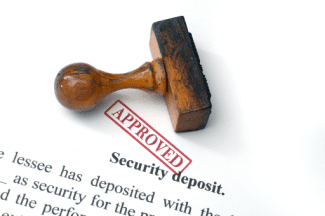Sometimes landlords return the entire amount of the security deposit to the tenant. Other times, the tenant gets only part of the deposit or even owes the landlord money. However, landlords must justify the amount deducted, if any, from the deposit, otherwise, the tenant can sue in small claims court.
You can justify not returning the full amount of a security deposit when the tenant:
- Left the apartment still owing rent
- Caused major damage to the apartment
- Created extremely filthy conditions in the apartment, requiring extra cleaning
- Left possessions in the apartment, necessitating removal
- Terminated the lease prematurely
- Stuck you with unpaid utility bills
As long as you can show what the tenant did to warrant deductions from the original deposit, you don’t have to return the full original amount. Be sure to have proof, such as photos of the apartment or receipts for unpaid bills, in case the tenant takes you to small claims court.
Security Deposit Refund Financial Statement
If you decide not to write a letter to the tenant, you can send a financial statement instead. The statement must include the:
- Tenant’s name and new address, or address he gave for return of the security deposit
- Commencement date of the lease and date it ended
- Amount of the security deposit when the tenant moved in
- Amount of interest accrued
- Legitimate itemized deductions, including unpaid rent, damages, cleaning costs, repairs, unpaid utilities, late fees, and other expenses
- Total amount of deductions from the security deposit
- Balance due to the tenant or amount due to the landlord, if any
- Landlord’s address for the tenant to send any money owed
- Landlord’s signature and date of signing
- Copies of repair bills
Security Deposit Letter to Tenant
If you want to write a letter to the tenant, include the financial statement as well, as that contains the most important section. Also, include the following:
- An introductory paragraph, explaining that by law you’re required to return the security deposit minus any legitimate charges
- A sentence that the letter contains a financial statement of deductions from the security deposit
- The amount of each deduction and an explanation of why each is being deducted
- Copies of repair and cleaning bills
- Either a check for the amount owed to the tenant or a request for the tenant to pay the amount due immediately, including a date by which payment must be made
A security deposit return letter doesn’t have to have fancy language or a lot of details other than showing what deductions are coming out of the deposit. It’s your decision whether to write this in letter form or as a financial statement, but check the laws in your state to make sure you comply with local requirements.
Source: Legal Zoom
















 Accessibility
Accessibility